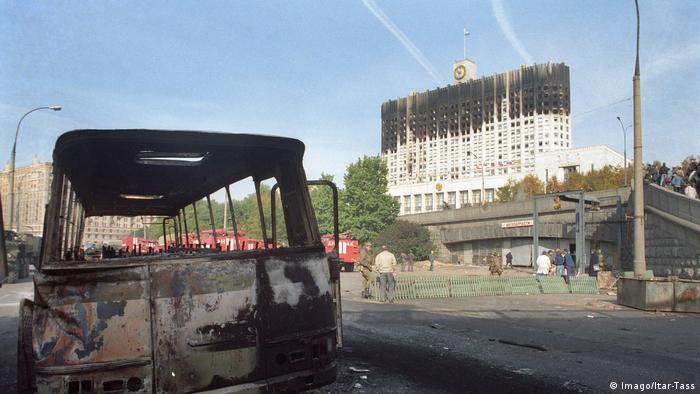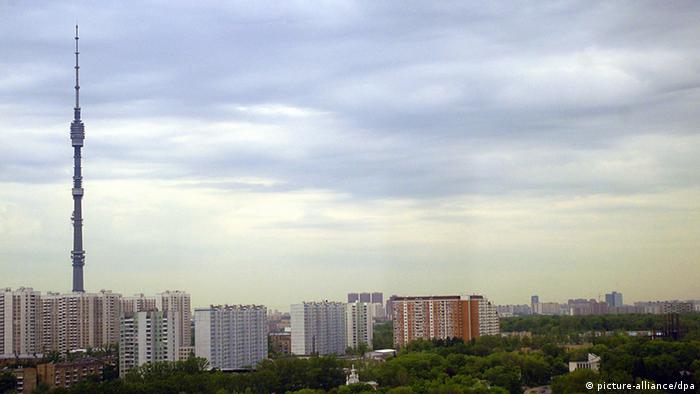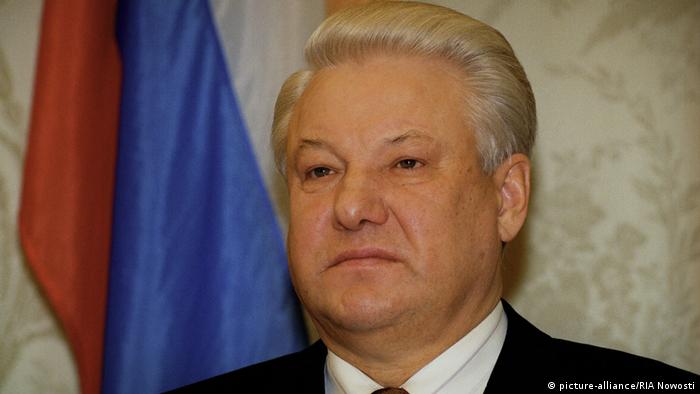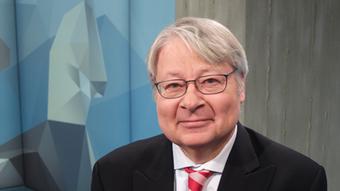25 years ago a Constitution escalated in Russia crisis. Then-President Yeltsin used the army against the Parliament. The West supported him in the Belief that the Alternative is worse.

The present seat of government on the banks of the Moskva river, popularly “the White house”, was in the recent history of Russia the set of two dramatic events. In August 1991, the building of the former Supreme Soviet was a centre of the resistance against the coup by Communist hard-liners. The newly elected President Boris Yeltsin climbed here media effective on a tank, and introduced himself as a defender of democracy. The coup failed without much bloodshed. Two years later, the White house was once again a centre of the resistance, this time against Yeltsin. As at the beginning of October 1993, the power struggle between the President on one side and the Supreme Soviet and the national people’s Congress, on the other, escalated, leaving Yeltsin and his opponent tanks under fire. It was the culmination of a constitutional crisis, whose consequences characterize Russia today.
Bloody end of a double reign
A Review. After the collapse of the Soviet Union, Yeltsin tried to reform Russia quickly, both politically and economically. However, the process increased and was accompanied by a deep split in the society. Broad layers of the impoverished. Also against this Background, the Supreme Soviet and the national people’s Congress, which acted as a Parliament, against Yeltsin and blocked more and more of his policy. Many of Yeltsin’s opponents were nationalists, the Communists and the ultra, which is why often in the media of a “red-brown revenge”.

Armed opponents of Yeltsin stormed during the constitutional crisis of 1993, the Ostankino TV tower
21. September 1993 was Yeltsin by the decree of both bodies dissolve and thus exceeded its competence. The Supreme Council and the national people’s Congress voted for his deposition from the presidency. The de facto double-rule escalated on 3. October, when armed opponents of the President, the Moscow mayor’s office and the Television centre Ostankino stormed. Yeltsin used the army, the at the 4. October, the White house attack. Tanks shot in broad daylight from a short distance, and set fire to the building. Images of the charred facade went around the world. There are more than 100 people died in total. Yeltsin won, and let the people in December 1993, in a Referendum on a new Constitution to the vote, which consolidated its Power and expanded. A strong was born in Russia on the President-oriented system, from which the current Kremlin boss, Vladimir Putin, benefits.
“The birth of the” guided democracy,””
Even then, the question of whether Yeltsin’s use of violence an hour of death of Russian democracy or a necessary Evil was introduced. And today, 25 years later? Hans-Henning Schröder, a former Russia expert at the Berlin-based Stiftung Wissenschaft und politik (SWP), has maintained its estimate of the time basically. “It was a conflict of two constitutional bodies, both of which were legitimized by elections”, said Schroeder in a conversation with Deutsche Welle. The conflict was “almost inevitable”. After Yeltsin’s opponents had been transferred to the armed resistance, “the use of violence on the part of the state makes it clear”.
12. In December 1993, when the new Constitution was voted on, keeps Schröder for “the birth of the managed democracy in Russia”. Yeltsin wanted to have a Constitution in which the President was untouchable. The Chance would have been “because, to make a Constitution in which Parliament plays a big role,” says Schroeder. This opportunity was not used.

Has been classified by the West as a representative of democracy, Boris Yeltsin
Uncritical stance of the West
The West has 1993 on the side of Yeltsin. “It was an important Phase in the ongoing struggle between a Vision of Russia that was very conservative, which strove for a kind of continuation of the Soviet Union, with a Top-Down rule, principle, and strong forces of law and Order such as the secret service, the KGB or the FSB,” says Andrew Wood, who was between 1995 and 2000, the British Ambassador in Russia, and today, expert of think-tank Chatham House in London. “We in the West have made us at the time, Worried about the emergence of a red-brown coalition of various conservative forces, with the additional of a nationalistic coloration”. Yeltsin had been regarded in the West as “the better hope”.
Whether the West has made a mistake, allowing himself to be uncritical with Yeltsin in 1993, dealt? “In retrospect, I would say, Yes, but it had to do with a” real “Parliament,” says Wood.
Similarly, Hans-Henning Schröder: “at that Time there was in the West, have a very uncritical attitude to the whole process. It was assumed that Yeltsin represents the democracy and everything, what is the use of Yeltsin, is also good for democracy.” But Yeltsin’s credibility the Democrats have damaged approach “as a Reformer”.

Hans-Henning Schröder from the Foundation for science and politics (SWP)
Greetings from the past
In today’s Russia there is a conflict with the use of force between the President and the Parliament seems impossible. For that reason alone, because the head of state the Power in his hands. And yet, Andrew Wood looks at some of the “analogies” between 1993 and 2018. “As a Russian, you are not worried about the future, you can see how the Putin System is stable and constructive, able to develop, you think you’re in a trap,” the Ex-Diplomat. “As a Westerner, one could see Putin as a necessary source of stability, a reply to Russian habits and traditions”.
The Russia of today remind you of what you had in 1993, fear, grant Wood: a conservative and nationalistic system of power. The liberal Moscow newspaper “Novaya Gazeta” noted there is still a connection. In the case of the recent Governor elections in Russia, in some regions, surprisingly, the candidates of the Communists and the right-wing populists, who position themselves as Opposition to the Kremlin. However, unlike 1993, there is in Russia today no longer afraid of the “red-brown forces”, not even in liberal circles.